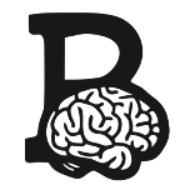TRANSCRIPT
[00:00:00] Hello, everybody. Welcome back to another episode of the Better Brain Fitness podcast. My name is Tommy Wood, and I am joined as ever by my conceptual co host, Dr. Josh Turknett. Say hello, Josh. Hello, Tommy. How are you? I’m good. Thanks. Really happy to be back. With another fantastic question for you. We have a question from Jen in San Diego, Jen, I’m going to paraphrase your question a little bit.I hope that’s okay. buT Josh, when you present your model, of how to think about stimulating the brain, you have these three categories, the technical, the perceptual, and the con ceptual. And Jen asks us about her favorite way to work out, which is open style dance which she says may not have much of.
conceptual challenge, but does have a robustly physical challenge. So that’s kind of separate from your three categories, but was wondering how that integrates in and then asking whether, you know, if she does her open style dance, which she [00:01:00] really likes to do, she doesn’t want to stop doing that. Could she get her conceptual challenge from Let’s say a sedentary but cognitive challenge, or how would you integrate these different things to kind of tick all the different boxes as part of your model?
So take it away. Okay. Well, I think this is a great question. I like it for a lot of reasons, brings up a lot of different areas. And I think the short answer for her question is, is absolutely, this is a beneficial thing. In fact, I think that. you know, her this open style or freeform dance, probably one of the best things that you could do for your, both for physical and cognitive health.
And so she should continue to do so without reservation. Long answer. So I’ll first unpack a little bit about the three categories that she talks about. So those are the three categories that I kind of give in the better rain fitness course, which I think she’s going through. that [00:02:00] are sort of to comprise a whole brain workout.
So those would be technical skills or complex motor skills, conceptual skills, and perceptual skills. So again, technical would be complex motor skills, which you can think of as pattern movements. Then you have perceptual skills, which are recognizing or identifying complex patterns in sensory information, and then conceptual skills will be pattern recognition in internally generated or abstracted information.
So something like math is a purely conceptual endeavor, you know, involving concepts and information that’s generated entirely within the minds of humans, but then we then manipulate and look for patterns in. And so I use this as a kind of a way of trying to understand sort of the whole scope. of human cognition, kind of everything falls into, or we can kind of group everything into [00:03:00] one or more of these categories.
And so a complete program of brain fitness would ideally include activities that hit all of these things. And then there are certain things that hit, hit all of them. One of which is learning music. So you have You have motor skills that must be learned, complex movement patterns to play an instrument.
You have perceptual skills, largely in the auditory realm, and then the conceptual skills, which include all of the necessary concepts like keys and scales and musical form and structure. And the same would be true of dance and that’s one of the reasons I consider music and dance to be kind of prototypical brain fitness activities and kind of the model against which we would measure other things.
And now what Jen is asking about is the benefits of kind of free form or what she refers to as open style dance. maybe in [00:04:00] contrast to learning a particular style of dance like salsa or swing, or, you know, learning a specific choreography. And one way that that might differ from these more formal dance styles would be it doesn’t require learning certain conceptual skills, you know, in the way that learning a particular style of dance.
would require, you know, learning particular concepts that are specific to that style. And then maybe, you know, the absence of learning particular motor routines that have to be, you know, memorized to a degree or whatever. And then, so there are kind of two things she’s asking in her question. The first is whether the absence of Conceptual skills in this particular activity is an issue or that makes it, you know, less productive as a brain fitness endeavor.
And, you know, short answer there, I think absolutely not. As I [00:05:00] mentioned, the main reason for this sort of categorization system is to help us in kind of thinking clearly about how we would exercise or try to stimulate our entire brain or our entire. And just like how a complete program of physical fitness would target all the areas of the body, a complete program of brain fitness would do so and target all areas of the brain.
It’s a lot easier to understand what. a full body workout looks like. And also in the physical realm, some activities are more likely to stimulate many different muscle groups while others may be more isolated. And you know, those are great activities to know about and engage in because you get a lot of bang for your buck.
And the same is true in the cognitive realm. Some activities are going to engage more. brain area of another. But that doesn’t mean we, you know, need to get all of our stimulation [00:06:00] in one single activity or exercise. And Jen mentions this in her question, right? She asks if, if, you know, she could get her conceptual stimulation, so to speak from something else.
And the answer there is, of course. So this would be just like in the physical realm. If you were, let’s say, a cyclist and you’re trying to think about, you know, a complete program of physical fitness and you know that you’re cycling is a great workout with lots of benefits in particular for, you know, the cardiovascular system and your lower body.
But if you want it to be complete, you want to ensure that you’re doing some upper body training as well. And likewise, we would kind of think through brain fitness or cognitive stimulation in the same way. And in Jen’s case, you could get that, you know, sort of conceptual stimulation from any number of other things.
It could be, you know, learning any number of hobbies or crafts, or, you know, learning any topic in math or science learning a language. Even just, you know, [00:07:00] reading frequently can provide this by introducing new vocabulary words, or… new concepts or ideas that you have to digest and understand. And so this kind of categorization system for stimulating activities is there just to help understand what a complete program looks like and then help identify where any gaps that might exist.
And I’d say that for most people, actually the biggest gaps are likely going to be in the perceptual or motor. realm anyways less likely given sort of the nature of modern life to be in that conceptual category.
This podcast is brought to you by the Brain Joe Academy. The Brain Joe Academy provides brain boosting whole brain stimulation in the form of neuroscience based musical instruction designed for adult brains and with no prior musical experience required. Start your brain boosting musical journey today.[00:08:00]
And then the second part of her question is that, shouldn’t the physical nature of dancing account for something in terms of brain benefits? And the answer there is unequivocally yes as well. And I think the most helpful way. of conceptualizing those benefits is with the stimulation and support framework that we’ve discussed with this kind of falling more on the support side of that equation, whereas the three categories we’ve talked about are kind of framing the stimulation side.
So, you know, what we’ve talked about thus far is how to stimulate the most amount of brain tissue, right? Because our brain and body devotes resources to the tissues that we’ve stimulated. And when we’re engaging in these various activities, we’re sending the body a signal to either maintain a set of adaptations that already exist or generate new ones.
And [00:09:00] we think that this is a foundational element for maintaining health. But we also have to have the resources to support those adaptations. And that’s where things like nutrition, sleep, and physical activity come in. So we see kind of the main benefit of physical activity in delivering the resources that are needed to respond to the stimulation that we provide.
And so it directly influences the return that we get on those. You know, brain fitness efforts stimulation won’t do us any good if we can’t adequately respond to it. And so it’s crucial that we attend to both of those factors if we’re trying to maintain brain health and cognitive function. And so one of the additional benefits of dance, which has this stimulation component because of all this coordinated motor activity and so forth, which is also, this is also true of skill sports is that it provides both this robust stimulation, but also contributes to [00:10:00] supporting our ability to respond.
to that stimulation. So that kind of I think hopefully addresses the specific questions she had about it, but there are a couple other things I want to say about her question and the benefits of kind of freeform dance. One is that what she is describing here is Is a form of play basically an activity that she’s doing just for the sake of it You know not to achieve any particular future goal Whereas if you were, you know learning a dance style you might you know One of your goals would be I want to be able to execute these particular movements sometime in the future and It’s no secret that, you know, play is something kids do a lot of, and adults tend to do very little of, and there are many reasons why this might be, but one is the tendency for us to see play as frivolous, and I think that’s may be partly reflected in some of Jen’s uncertainty about [00:11:00] the value of this activity.
You know, could it be, can it actually be beneficial if there isn’t a clear and obvious goal? And there’s plenty of evidence that indicates that play for adults is hugely beneficial and a whole host of reasons why that is. Also, we’ve talked before about one way of thinking about an ideal program of brain fitness as trying to recreate the cognitive environment of childhood.
And I think one element that’s clearly missing in the lives of most adults is play, and it’s important to remember that the reason kids want to play so much is that. That’s how kids brains learn, you know, this is another common misconception and tragically one reason we tend to suppress play in children is because we think it’s purposeless which couldn’t be further from the truth.
thE reason kids want to play all the time is because [00:12:00] that’s how developing brains acquire all of those complex cognitive skills. And there’s a whole lot more we could say about this topic, and I think we will in future episodes, but bottom line is that play is enormously beneficial at any age. anD I think this is a great example of, of a type of play.
And then, if we view this particular kind of play through the lens of cognition, we can actually, you know, demonstrate that it is enormously stimulating. So for one, it involves freeform dance, which involves listening to music, I imagine, and all of the cognitive stimulation that that provides, which we’ve discussed in prior episodes.
But then it also requires, you know, synchronizing the movements of your body to that music, which is a highly complex task for your entire motor system in the same way that playing a musical instrument requires synchronizing the movements that you’re making to the music. And you might be inclined to think, well.
There’s still no kind of no learning happening. [00:13:00] So at least it, you know, you might be maintaining adaptations that exist in various domains, but unlikely to be stimulating new ones or, you know, to be stimulating any plastic remodeling. But I would argue against that as well. I contend that there is almost certainly going to be new learning happening in this type of scenario.
Because specifically what you’re doing is developing your own Set of movements or things that you like to do in sync with the music music and you know learning Inevitably learning what works well, what doesn’t and so you’re basically Creating and learning your own style of dance And I think it’s almost guaranteed that that’s going to evolve over time sort of based on what you learn based on your own self experimentation, even if it’s not anything conscious.
I think bottom line is your brain is always trying to learn or identify new patterns in the information that it processes and [00:14:00] play provides wonderful conditions for it to do so. And almost all of our learning happens in non conscious networks, which means that almost all of it. Is opaque to us.
And I think this is a scenario where that would definitely be true. So keep dancing, Jen. That’s, that’s the bottom line here. And in whatever way feels best to you. Tommy, anything to add there? Yeah a great answer. Thank you. I enjoyed you walking us through that. I was, I was wondering, just as you were talking, whether you had any thoughts, and it’s kind of based on Jen’s question, if you had any thoughts on the, those three separate areas being targeted individually with different skill learning at different times versus all of them at the same time.
And particularly for the conceptual things, because if you’re learning a musical instrument or a language, You know, you might have some separate time where you learn grammar and music theory and [00:15:00] things like that. And then you have, and then you have the implementation separately from, you know, when you actually speak in the language and or playing the instrument or learning a new piece.
So I was just wondering how you thought about those, those different parts. Yeah. I think in terms of like how to organize it, the, my bias is. is doing so in a way that’s as organic as possible, meaning you learning the concepts when they are needed and in context. So that may be, in some instances, kind of learning them alongside other things at the same time, or it could be Taking something and saying, I need to spend a dedicated amount of time to wrap my head around this particular concept or idea to move forward.
And that gets to kind of this idea that we want to keep things as close to kind of real world applicability as possible. Rather than sort of trying to isolate the malice. And so where it makes sense to isolate. in the real world, [00:16:00] you know, do so, but not sort of artificially. So if that makes sense, I really like that answer because it jives very much with how I’ve learned music and languages in the past.
So if you want to wanted me to sit down and learn. Grammar, right, you’d have to chain me to a chair, but release me into the world and I’ll start to generate pattern recognition so I know what sounds right and what doesn’t based on language usage. So I, I couldn’t tell you about the grammar in a foreign language that I can speak, but I know how to implement it based on real world things.
And it’s the same for, same, same for music, actually, like. I can’t, I can’t sight read music, but I’ll hear it once I can play it. So it just, so it probably depends a little bit on how you learn as well. Yeah. And we don’t, it’s very hard for us to grasp what we actually know. how we know it and what we need to know.
And so it’s more about finding the conditions where our brains [00:17:00] are able to discover that whether we ever have conscious awareness of how it’s all working or not. Great. So fantastic. Answer. Fantastic question. Yeah, great question. We need to talk more about play on the podcast. Yes, absolutely. And maybe there’s some good guests.
Yeah, I think so. I think we have some potential guests in that area too. Okay, well, yeah, thanks again, Jen, for your question. Excellent. And if you have, if you’re listening to this and have any other questions related to this topic, or anything else you’d like to ask us, feel free to send it our way.
Go to brainjo.academy/questions. And thanks so much for listening, and we’ll see you in the next episode.


